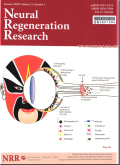摘要Prion diseases are infectious protein misfolding disorders of the central nervous system that result from misfolding of the cellular prion protein (PrPC) into the pathologic isoform PrPSc. Pathologic hallmarks of prion disease are depositions of pathological prion protein PrPSc, neuronal loss, spongiform degeneration and astrogliosis in the brain. Prion diseases affect human and animals, there is no effective therapy, and they invariably remain fatal. For a long time, neuronal loss was considered the sole reason for neurodegeneration in prion pathogenesis, and the contribution of non-neuronal cells like microglia and astrocytes was considered less important. Recent evidence suggests that neurodegeneration during prion pathogenesis is a consequence of a complex interplay between neuronal and non-neuronal cells in the brain, but the exact role of these non-neuronal cells during prion pathology is still elusive. Astrocytes are non-neuronal cells that regulate brain homeostasis under physiological conditions. However, astrocytes can deposit PrPSc aggregates and propagate prions in prion-infected brains. Additionally, sub-populations of reactive astrocytes that include neurotrophic and neurotoxic species have been identified, differentially expressed in the brain during prion infection. Revealing the exact role of astrocytes in prion disease is hampered by the lack of in vitro models of prion-infected astrocytes. Recently, we established a murine astrocyte cell line persistently infected with mouse-adapted prions, and showed how such astrocytes differentially process various prion strains. Considering the complexity of the role of astrocytes in prion pathogenesis, we need more in vitro and in vivo models for exploring the contribution of sub-populations of reactive astrocytes, their differential regulation of signaling cascades, and the interaction with neurons and microglia during prion pathogenesis. This will help to establish novel in vivo models and define new therapeutic targets against prion diseases. In this review, we will discuss the complex role of astrocytes in prion disease, the existing experimental resources, the challenges to analyze the contribution of astrocytes in prion disease pathogenesis, and future strategies to improve the understanding of their role in prion disease.
更多相关知识
- 浏览21
- 被引0
- 下载0


相似文献
- 中文期刊
- 外文期刊
- 学位论文
- 会议论文



 换一批
换一批 换一批
换一批



